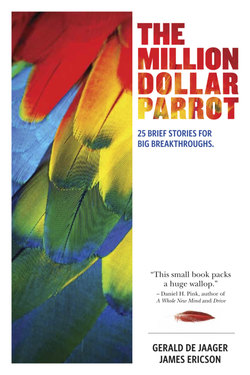Читать книгу The Million Dollar Parrot: 25 Brief Stories for Big Breakthroughs - Gerald de Jaager - Страница 7
ОглавлениеThe Bolero Challenge
Great results require attention to the accompaniment, not just the melody.
Described as a “veritable hymn to desire” and an “exaltation of the erotic,” Maurice Ravel’s 1928 orchestral composition, Bolero, is reportedly the world’s most frequently played piece of classical music.31 It extended its reach into popular culture when it was used as the background music for Dudley Moore’s tryst with Bo Derek in the movie 10.
In an Oscar-winning documentary, the conductor of the Los Angeles Philharmonic Orchestra, Zubin Mehta, discussed the complexities of successfully performing Bolero. He said, “It’s not only the melody that’s important. The build-up is going on in the accompaniment as well as in the theme.” Expanding, he said:
The way Bolero builds up, it’s not even comparable to any Beethoven or Brahms symphony ending, because those are normal, natural strettos [increases of musical intensity] at the end of movements. Bolero’s stretto starts from the first bar and continues. So keeping up the tempo, keeping up the pace and not going forward, not giving in to your instinct which pushes you forward—to hold this back, that is the tough part. I have seen performances of Bolero where the side drum, for instance, by the middle of the piece is already at its peak—you can’t do anything about it. The conductor can’t bring them down and build them back up again. It’s got to be done very, very carefully.32
In your organization, what gets more attention, the theme or the accompaniment? Do the “background” things like fostering innovation, developing employees, strengthening core competencies, living your values, or even marketing have a proper rhythm in relation to such front-and-center “melodies” as sales and production, so that long-term goals and short-term activities come together in satisfying ways?
For many years, management experts have observed that “hard drives out soft”—measurable indicators commonly take precedence over less-tangible intentions. Recent developments such as the “balanced scorecard,” which adds strategic non-financial performance measures to traditional financial metrics, can give managers and executives a more multifaceted view of organizational performance.33
Relatedly, it has frequently been demonstrated that the immediate will often drive out the longer-term. In his classic study, The Nature of Managerial Work, Henry Mintzberg showed that however much lip service organizations might pay to future-oriented activities, it is reacting to “hot news”—whatever urgent is happening right now—that more typically drives most managers’ behavior.34
Venture capitalist Scott Maxwell makes an explicit musical analogy in his advice to entrepreneurs about balancing hard and soft, long-term and immediate, writing,
Just as great marketers develop a marketing rhythm for their customers, great CEOs set the beat for the overall organization. I highlighted below an illustrative rhythmic beat that an expansion stage CEO could set for the overall organization. (Looks something like an EKG measurement of a heart beating, doesn’t it? Perhaps this is why companies with a great rhythm seem to come alive?)35
In 1972, Larry Greiner described longer-term organizational rhythms in a Harvard Business Review article whose predictive power has been demonstrated time and time again, showing how one theme of company growth will always be dramatically, and inevitably, supplanted by another over time.36 His model looked like this:
Because the “crises” in this depiction occur as a function of both the age of the organization and its size, the tempo of change will differ among organizations. The crises are similar to the strettos that Mehta discusses, places where overlapping themes (the growth stages) meet and must be integrated. Companies that manage toward an upcoming growth stage while focusing on the current one—that is, companies that attend to both the accompaniment and the theme—handle these transitions more easily.
The same kinds of issues occur, of course, in our personal lives. Retirement financial planning, for example, is a huge industry whose purpose is to help people pay sufficient attention to the “accompaniment”—building wealth—while they are concentrating on the “theme”—the financial decisions they make in the present moment. Effective career management may be said to have a similar rhythmic structure: developing aptitudes for desired future positions while also focusing on exemplary current performance.
“Beannacht” (“Blessing”)
by John O’Donohue37
On the day when the weight deadens
on your shoulders
and you stumble
may the clay dance
to balance you.
And when your eyes
freeze behind
the gray window
and the ghost of loss
gets in to you,
may a flock of colours,
indigo, red, green
and azure blue,
come to waken in you
a meadow of delight.
When the canvas frays
in the curach of thought
and a stain of ocean
blackens beneath you,
may there come across the waters
a path of yellow moonlight
to bring you safely home.
May the nourishment of the earth be yours,
and the clarity of light be yours,
may the fluency of the ocean be yours,
may the protection of the ancestors be yours.
And so may a slow
wind work these words
of love around you,
an invisible cloak
to mind your life.
